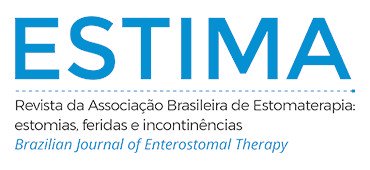Meanings of living with a chronic wound: a meta-synthesis study
Abstract
Objective: explore qualitative research on the meanings of living with a chronic wound. Method: it is a qualitative meta-synthesis. 13 articles were included, totaling a sample of 248 individuals who self-reported living with a chronic wound. The Critical Appraisal Skills Program instrument was used to evaluate the eligible articles, and to report the qualitative synthesis, the recommendations of Enhancing transparency in reporting the synthesis of qualitative research were followed. The analysis and extraction of information and construction of the synthesis were carried out by two independent reviewers, with the assistance of a third expert reviewer. Results: living with a chronic wound involves initial concerns and the appearance of symptoms, especially marked pain. They report that the increase in pain led to low functional capacity, as well as weakened social relationships and financial conditions. The experiences illustrate the challenges of emotional burden and the implications of illness, which contributed to social isolation. Religiosity and spirituality were the main coping strategies. Conclusion: living with a chronic wound means a condition of pain, limits physical and functional capacity, causes negative feelings and emotions that result in people’s isolation.
Downloads
Metrics
References
Fearns N, Heller-Murphy S, Kelly J, Harbour J. Placing the patient at the centre of chronic wound care: a qualitative evidence synthesis. Journal of Tissue Viability. 2017;26(4):254-259. doi: https://doi.org/10.1016/j.jtv.2017.09.002
Gupta S, Andersen C, Black J, Leon J, Fife C, JC LI et al. Management of Chronic Wounds: Diagnosis, Preparation, Treatment, and Follow-up. Wounds: a Compendium of Clinical Research and Practice. 2017 Sep [cited Aug 12, 2019];29(9):S19-S36. Available from: https://europepmc.org/article/med/28862980
Lentsck MH, Baratieri T, Trincaus MR, Mattei AP, Miyahara CTS. Qualidade de vida relacionada a aspectos clínicos em pessoas com ferida crônica. Rev. Esc. Enferm. USP. 2018 [cited Aug 13, 2019]; 52:e03384. doi: https://doi.org/10.1590/s1980-220x2017004003384
Hopman WM, Buchanan M, VanDenKerkhof EG, Harrison MB. Pain and health-related quality of life in people with chronic leg ulcers. Chronic Diseases & Injuries in Canada. 2013 [cited Aug 13, 2019];33(3):167-174. Available from: https://europepmc.org/article/med/23735456
Joaquim FL, Camacho ACLF, Silva RMCRA, Leite BS, Queiroz RS, Assis CRC. Impact of home visits on the functional capacity of patients with venous ulcers. Rev. Bras. Enfermagem. 2017;70(2):287-93. doi: http://dx.doi.org/10.1590/0034-7167-2016-029
Renner R, Erfurt-Berge C. Depression and quality of life in patients with chronic wounds: ways to measure their influence and their effect on daily life. Chronic Wound Care Management and Research. 2017;4:143-151. doi: http://dx.doi.org/10.2147/CWCMR.S124917
Kapp S, Miller C, Santamaria N. The quality of life of people who have chronic wounds and who self‐treat. Journal of Clinical Nursing. 2018;27(1-2):182-192. doi: https://doi.org/10.1111/jocn.13870
Stewart A, Edwards H, Finlayson K. Reflection on the cause and avoidance of recurrent venous leg ulcers: An interpretive descriptive approach. Journal of Clinical Nursing. 2018;27(5-6):e931-e939. doi: https://doi.org/10.1111/jocn.13994
Khunkaew S, Tungpunkom P, Sim J, Fernandez R. The Experiences of people in Northern Thailand living with Diabetic Foot Ulcers: A descriptive qualitative study. Pacific Rim International Journal of Nursing Research. 2018 [cited Jun 23, 2020];22(4):304-318. Available from: https://ro.uow.edu.au/smhpapers1/260/
Brown, A. Chronic leg ulcers, part 2: do they affect a patient's social life?. British Journal of Nursing. 2005;14(18):986-989. doi: https://doi.org/10.12968/bjon.2005.14.18.19888
Probst S, Séchaud L, Bobbink P, Skinner MB, Weller CD. The lived experience of recurrence prevention in patients with venous leg ulcers: An interpretative phenomenological study. Journal of Tissue Viability. 2020. doi: https://doi.org/10.1016/j.jtv.2020.01.001
Waidman MAP, Rocha SC, Correa JL, Brischiliari A, Marcon SS. O cotidiano do indivíduo com ferida crônica e sua saúde mental. Texto Contexto – Enferm. 2011;20(4):691-699. doi: https://doi.org/10.1590/S0104-07072011000400007
Briggs M, Flemming K. Living with leg ulceration: a synthesis of qualitative research. Journal of Advanced Nursing. 2007;59(4):319-28. doi: https://doi.org/10.1111/j.1365-2648.2007.04348.x
Phillips P, Lumley E, Duncan R, Aber A, Woods HB, Jones GL et al. A systematic review of qualitative research into people's experiences of living with venous leg ulcers. Journal of Advanced Nursing. 2018;74(3):550-563. doi: https://doi.org/10.1111/jan.13465
Gomes E, Donoso MTV, Werli-Alvarenga A, Goveia VR. Compreendendo os significados de se conviver com ferida crônica. Revista de Enfermagem e Atenção à Saúde. 2018;7(2):176-188. doi: https://doi.org/10.18554/reas.v7i2.2396
Campbell R, Pound P, Morgan M, Daker-White G, Britten N, Pill R et al., Evaluating meta-ethnography: systematic analysis and synthesis of qualitative research. Health Technol Assess. 2011;15(43). doi: https://doi.org/10.3310/hta15430
Sandelowski M, Barroso J. Handbook for Synthesizing Qualitative Research. New York: Springer Publishing Company; 2007. 284 p.
Joanna Briggs Institute. Joanna Briggs Institute reviewers’ manual: 2008 edition. Adelaide; 2008.
Moher D, Liberati A, Tetzlaff J, Altman DG, PRISMA Group. Preferred reporting items for systematic reviews and meta-analyses: the PRISMA statement. Annals of Internal Medicine. 2009;151(4):264-9. doi: https://doi.org/10.7326/0003-4819-151-4-200908180-00135
Vieira JA, Garrett JM. Understanding interobserver agreement: the Kappa statistic. Family Medicine. 2005 [cited Jun 03, 2019];37(5):360-363. Available from: http://www.stfm.org/fmhub/fm2005/May/Anthony360.pdf
Jackson DE, Durrant LA, Hutchinson M, Ballard CA, Neville S, Usher K. Living with multiple losses: Insights from patients living with pressure injury. Collegian. 2018;25(4):409-414. doi: https://doi.org/10.1016/j.colegn.2017.10.008
Umeh NI, Ajegba B, Buscetta AJ, Abdallah KE, Minniti CP, Bonham VL. The psychosocial impact of leg ulcers in patients with sickle cell disease: I don’t want them to know my little secret. PloS one. 2017;2(10):e0186270. doi: https://doi.org/10.1371/journal.pone.0186270
Barg FK, Cronholm PF, Easley EE, DavisT, HamptonM, Malay DS, Margolis, DJ. A qualitative study of the experience of lower extremity wounds and amputations among people with diabetes in Philadelphia. Wound Repair and Regeneration. 2017;25(5):864-870. doi: https://doi.org/10.1111/wrr.12593
Critical Appraisal Skills Programme [CASP]. CASP Qualitative Research checklist. 2013 [cited Jun 3, 2019]. Available from: https://casp-uk.net/wp-content/uploads/2018/03/CASP-Qualitative-Checklist-2018_fillable_form.pdf
Tong A, Flemming K, McInnes E, Oliver S, Craig J. Enhancing transparency in reporting the synthesis of qualitative research: ENTREQ. BMC Medical Research Methodology. 2012 [cited Jun 3, 2019];12(1):181-9. Available from: https://bmcmedresmethodol.biomedcentral.com/articles/10.1186/1471-2288-12-181
Braun V, Clarke V. Using thematic analysis in psychology. Qualitative Research in Psychology. 2006 [cited Jun 6, 2019];3(2):77-101. Available from: https://www.tandfonline.com/doi/abs/10.1191/1478088706qp063oa
Aguiar ACDSA, Amaral L, Araújo RL, Barbosa TSM, Camargo CL, Reis AM. Changes in the lifestyle of people with venous ulcer. Revista Cubana de Enfermería. 2014 [cited Jun 9, 2019];30(3). Available from: http://www.revenfermeria.sld.cu/index.php/enf/article/view/510/98
Alves RM, Carvalho ESS, Santos LM, Oliveira JF, Araújo EM. Ser mulher e ter o corpo ferido: Um estudo de representações sociais. Revista de Pesquisa Cuidado é Fundamental Online. 2014;6(4):1513-1524. doi: https://doi.org/10.9789/2175-5361.2014.v6i4.1513-1524
Alves JF, Sousa ATO, Soares MJGO. Sentimentos de inclusão social de pessoas com úlcera venosa. Revista de Enfermagem da UFSM. 2015;5(2):193-203. doi: http://dx.doi.org/10.5902/2179769215425
Buso ALZ, Mendonça FTNF, Nunes JS, Ferreira LA, Santos ÁS, Zuffi FB. Perceptions of elderly living with leg ulcer. Bioscience Journal. 2016;32(5):1373-1379. doi: https://doi.org/10.14393/BJ-v32n1a2016-32738
Cipolletta S, Amicucci L. Illness trajectories in patients suffering from leg ulcers: A qualitative study. Journal of health psychology. 2017;22(7):932-942. doi: https://doi.org/10.1177/1359105315619224
Lernevall LS, Fogh K, Nielsen CB, Dam W, Dreyer PS. Lived experiences of life with a leg ulcer-a life in hell. EWMA Journal. 2017;17(1):15-21.
Joaquim FL, Silva RMCRA, Pereira ER, Garcia-Caro MP, Cruz-Quintana F. Application of Merleau-Pontyan perspective on the physical and psychological implications of venous ulcers. Revista Brasileira de Enfermagem. 2018;71(5):2469-2476. doi: http://dx.doi.org/10.1590/0034-7167-2017-0542.
Palaya J, Pearson S, Nash T. Perception of social support in individuals living with a diabetic foot: A qualitative study. Diabetes research and clinical practice. 2018;146:267-277. doi: https://doi.org/10.1016/j.diabres.2018.10.016
Marczak J, Rembeck G, Petersson EL, Nordeman L. Patient experiences of living with chronic leg ulcers and making the decision to seek professional health-care. Journal of wound care. 2019;28(Sup1):S18-S25. doi: https://doi.org/10.12968/jowc.2019.28.Sup1.S18
Taverner T, Closs J, Briggs M. A meta-synthesis of research on leg ulceration and neuropathic pain. British Journal of Nursing. 2011 [acceso: 25/02/2020];20(Sup12):18-S27. Disponible en: https://doi.org/10.12968/bjon.2011.20.Sup12.S18
Cwajda-Bialasik J, Szewczyk M, T., Moscicka P, Cierzniakowska K. The locus of pain control in patients with lower limb ulcerations. Journal of Clinical Nursing, 21(23-24), 3346-3351. doi: https://doi.org/10.1111/j.1365-2702.2012.04163.x
Taverner T, Closs SJ, Briggs M. The journey to chronic pain: a grounded theory of older adults' experiences of pain associated with leg ulceration. Pain Management Nursing. 2014;15(1):186-198. doi: https://doi.org/10.1016/j.pmn.2012.08.002
Ussery EN, Fulton JE, Galuska DA, Katzmarzyk PT, Carlson SA. Joint prevalence of sitting time and leisure-time physical activity among US adults, 2015-2016. Jama. 2018;320(19):2036-2038. doi: https://doi.org/10.1001/jama.2018.17797
SouzaI MKB, Matos IAT. Percepção do portador de ferida crônica sobre sua sexualidade. 2010 [cited Jul 27, 2019];18(1):19-24.Available from: http://www.facenf.uerj.br/v18n1/v18n1a04.pdf
O’Brien J, Finlayson, Kerr G, Edwards H. The perspectives of adults with venous leg ulcers on exercise: an exploratory study. J Wound Care. 2014;23(10):496-509. doi: https://doi.org/10.12968/jowc.2014.23.10.496
Waidman MAP, Rocha SC, Correa JL, Brischiliari A, Marcon SS. O cotidiano do indivíduo com ferida crônica e sua saúde mental. Texto context - Enfermagem. 2011;20(4):691-699. doi: https://doi.org/10.1590/S0104-07072011000400007.
Van-Hecke A, Verhaeghe S, Grypdonck M, Beele H, Defloor T. Processes underlying adherence to leg ulcer treatment: a qualitative field study. International Journal of Nursing Studies. 2011;48(2):145-155. doi: https://doi.org/10.1016/j.ijnurstu.2010.07.001
Turk DC, Fillingim RB, Ohrbach R, Patel KV. Assessment of psychosocial and functional impact of chronic pain. The Journal of Pain. 2016;17(9):T21-T49. doi: https://doi.org/10.1016/j.jpain.2016.02.006
Downloads
Published
How to Cite
Issue
Section
License
Copyright (c) 2020 Wilkslam Alves de Araújo, Wagner Couto Assis, Alba Benemérita Alves Vilela, Rita Narriman Silva de Oliveira Boery, Vanda Palmarella Rodrigues, Roseanne Montargil Rocha

This work is licensed under a Creative Commons Attribution 4.0 International License.

























